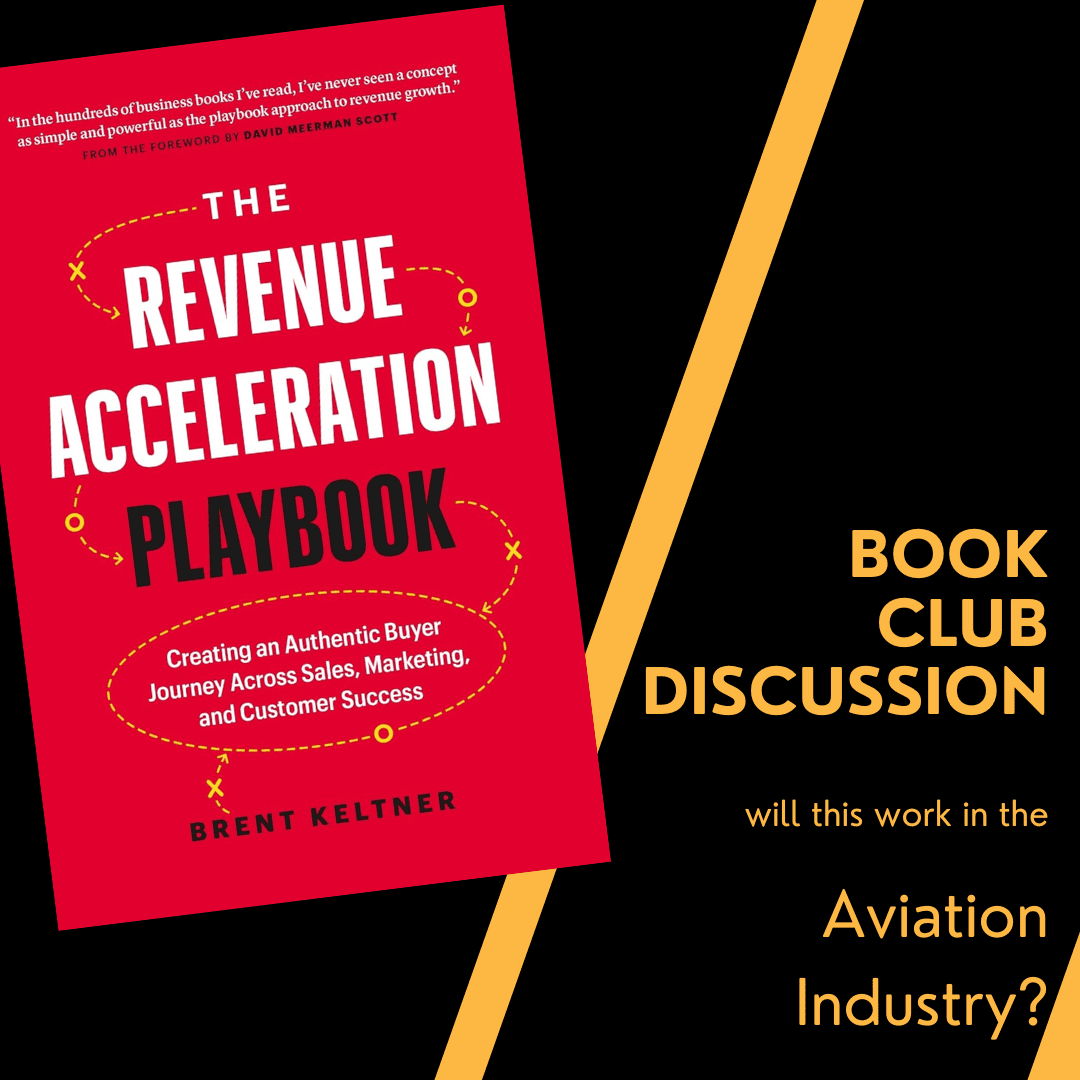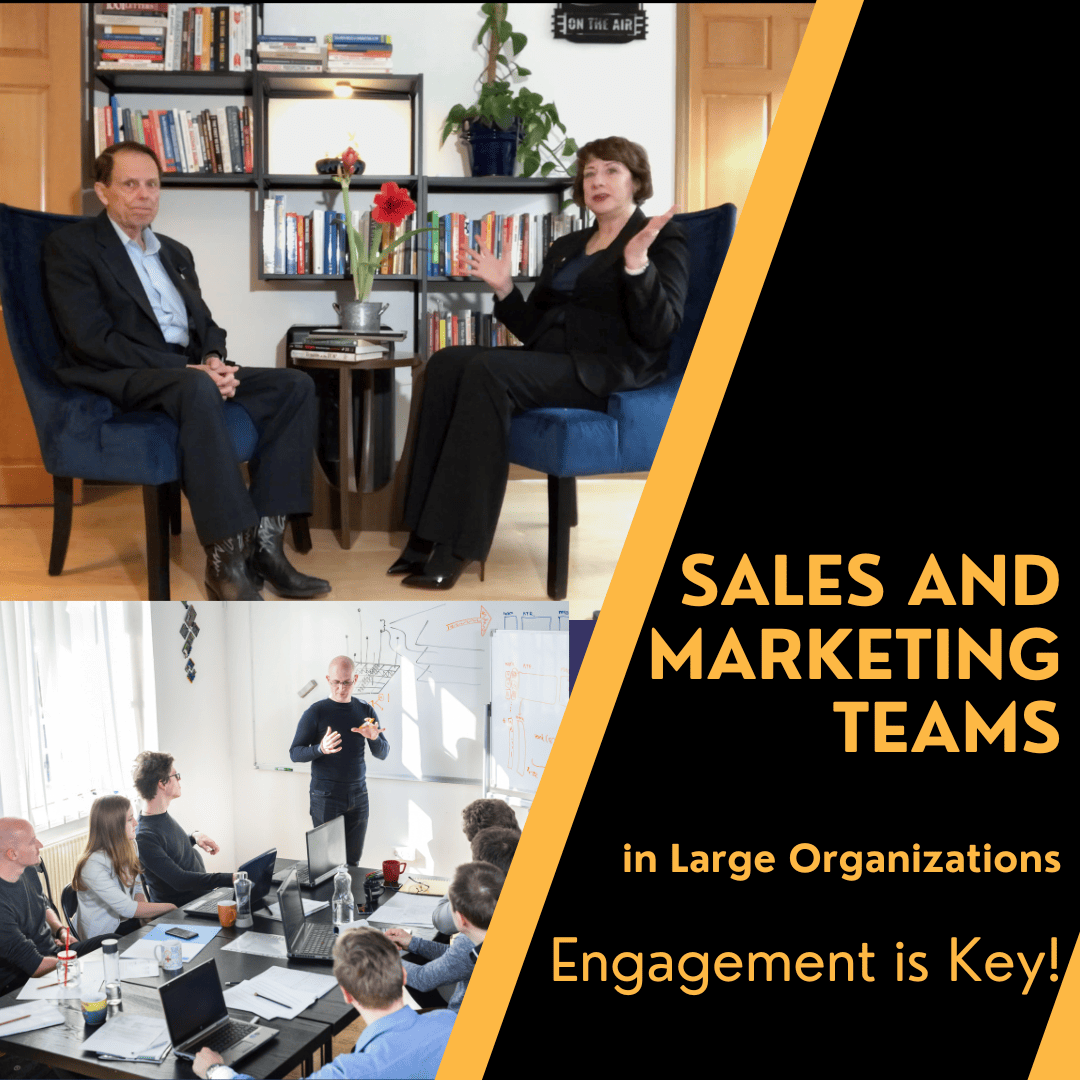John, Mickey and I discuss three key points from Jab, Jab, Jab, Right Hook by Gary Vaynerchuk
- Why should give before asking. (Something almost nobody ever does, especially with the mechanized marketing bots and software people are using these days!)
- The difference between native and non-native advertising
- How to find your audience and meet them where they already are.
I think this was one of our top three books we’ve read so far this year. What do YOU think?
[embedyt] https://www.youtube.com/watch?v=0r84gc7FDXs[/embedyt]
[smart_track_player url=”http://traffic.libsyn.com/aviationmarketing/Book_Club_-_Jab_Jab_Jab_Right_Hook_by_Gary_Vaynerchuk_.mp3″ background=”default” ]
Transcript of the Book Club Discussion – Jab, Jab, Jab, Right Hook by Gary Vaynerchuk
Paula Williams: Welcome to this week’s episode of our aviation marketing podcast. I’m Paula Williams.
John Williams: And I’m John Williams.
Paula Williams: And we are ABCI and ABCI’s mission is…
John Williams: To help all you ladies and gentleman out there in the aviation world sell more products and services.
Paula Williams: Absolutely. So today we are doing a book club.
John Williams: Yes we are.
Paula Williams: With one of our favorite, I guess new favorite, authors. Didn’t use to be my one of my favorites. I had kind of a prejudice against this guy to begin with just because of the way he presents himself but I have grown to appreciate his style a little bit more.
John Williams: And his background and his thoughts on today’s…
Paula Williams: Exactly. So before we reveal who that is… not yet. It’s okay. Before we reveal who that is, okay. We’ll reveal who that is. This is Gary Vaynerchuk and the book Jab, Jab, Jab, Right Hook: How to Tell Your Story in a Noisy Social World. And, of course, we talk about this with our book club facilitator and our kid, Mickey Gamonal, and that is a really fun conversation so we’ll get into that.
A Word From Our Sponsor (Actually, That’s Us!)
 But before we do, our cardinal rule at ABCI is “no random acts of marketing.” And most of the problems we see with social media, are that you can have an unplanned strategy and unmeasured implementation. It’s just so easy that its easy to just start doing stuff without really thinking it through. So if you’re thinking about how you can get all those metrics and numbers that we keep harping on and see how much you’re paying for each social channel and how much value each campaign is generating, it’s really important to have a system to keep track of all that stuff.
But before we do, our cardinal rule at ABCI is “no random acts of marketing.” And most of the problems we see with social media, are that you can have an unplanned strategy and unmeasured implementation. It’s just so easy that its easy to just start doing stuff without really thinking it through. So if you’re thinking about how you can get all those metrics and numbers that we keep harping on and see how much you’re paying for each social channel and how much value each campaign is generating, it’s really important to have a system to keep track of all that stuff.
So we’re using SharpSpring as our CRM and we’ve installed it for a few aviation clients.
One of the cool things is that you can run an advertisement on social media, on Facebook, Twitter, Instagram, or run a post on one of those channels and see how many leads you receive from it and how much each of those opportunities is worth. So a system like SharpSpring can really help. Of course, any software is only as good as the data you put into it, so with our Aviation Lead Generator program, we bundle the SharpSpring CRM with our famous ABCI service.
So the nice thing about tracking social media is that it’s mostly automatic. Someone visits your Facebook page and then goes to your website and then fills out a form and then gets a checklist or an e-book and then opens a few of your emails and then eventually buys from you. Generally he won’t even remember that he found you on Facebook and you certainly won’t remember that either. So Bob Seger says rock and roll never forgets but we’re saying that software never forgets.
We do all the configuring, we connect it to your website, we set up your campaigns and so on so that it starts collecting data right away and the longer you use it the better the data will be because we do have long sale cycles in aviation and sometimes a person you meet today at an event or a person that sees an ad on your Facebook page today, might not become a customer until eight months later. So a system like our Lead Generator becomes more and more valuable over time. So you can check out the details at ABCI1.com/leadgenerator. Thanks for joining us, [inaudible 00:03:24] for but let’s jump in to our book club.
John Williams: Cool.
First Impressions
Mickey Gamonal: So welcome back to ABCI’s book club. Today we are discussing Gary Vaynerchuk’s Jab, Jab, Jab, Right Hook: How to Tell Your Story in a Noisy Social World. Before we get started, go ahead and let me know your initial thoughts. We’ll start with mom.
Paula Williams: Okay. I like Gary V in spite of myself, I think. I think he’s a little rough around the edges and I would like for people to dress up, be prepared, show some respect to their clients and their customers and Gary V is like the complete opposite of that but I like him anyway because he is so real and he is so himself and he is so authentic to what he does and Jab, Jab, Jab, Right Hook, I think did a really good job of explaining his method of give, give, give, give, give, then ask. Instead of always, always asking, which is… he’s trying to break a pattern, you know. And by establishing a new pattern which takes a lot of guts for someone who is so new to the scene, I guess. Speaking as an old-timer, you know. There you go.
Mickey Gamonal: No fair enough, fair enough. Cool. What about you John, what do you think?
John Williams: I think in one word, and not to take away from what Paula said, but I call it refreshing.
Mickey Gamonal: Okay.
Paula Williams: Refreshing honesty? Refreshing non-BS.
John Williams: Yeah, no he’s pretty straightforward in what he says and like Dan, you can’t really argue with it. You may not like his style but there it is.
Paula Williams: Like Dan Kennedy?
John Williams: Mm-hmm (affirmative).
Paula Williams: Yeah.
Mickey Gamonal: Right, yeah. No it’s funny because we just reviewed Dan Kennedy’s book The Ultimate Marketing Plan and in that book, it was jarring, you know, was one of the statements I used when reviewing the book is just, very finite statements of this is how it will be, this is how it will be. And Gary Vaynerchuk does kind of follow the same method. He definitely writes his book like he’s writing commandments. In this case, they’re presented as rounds of a boxing match. There’s 12 rounds and all that sort of thing. But it’s still very much like this is the final word on this topic and you can take it or leave it but I’m right.
Paula Williams: Yeah.
Mickey Gamonal: And you know you got to envy… I mean shoot if you’re going to write a book that you want more than one person to read, you got to believe that you have something that more than one person needs to hear. And I think Gary Vaynerchuk really believes in himself and his statements throughout. One thing that I personally liked about the book is that it does talk about specifically, Twitter, Facebook, Instagram, and you can see on the book cover it has Google+, LinkedIn, Tumblr, Pinterest, Vine, and Snapchat.
It has all of these social media platforms and he treats them all as though they’re some sort of a obstacle to overcome for your business. And I think that’s great, cast a wide net and all that sort of thing. But he does also zero in on how to find the proper client within each platform, which I think is also beneficial. But again, this is another book, just like The Ultimate Marketing Plan where maybe it’s just too much, it’s too broad, too much information for anybody to really go out and create some sort of a marketing plan. In my opinion.
Paula Williams: So there was, go ahead.
Give (Jab) Before Asking (Right Hook)
John Williams: I got a quote from this book too.
Mickey Gamonal: All right go for it. Get it, hit us with the quote.
John Williams: This quote is actually talks to Gary and his approach, his style. And this is under, on page 860 titled How to Expand Your Universe. Anyway, several paragraphs in there, and you know the dot dot dot. It says “fortunately there’s a book available that offers detailed explanations of why and how Twitter can be one of business’ most powerful customer service tools. It’s my last book, The Thank You Economy. Read it. Good.”
And his asterisk behind it says, “How’s that for a right hook.”
Paula Williams: Right. And we did review The Thank You Economy earlier this year so.
John Williams: Yeah, I know. But what I’m saying is, this is pretty much how it tells you about him and how he approaches marketing.
Native vs. Non-Native Advertising
Paula Williams: Mm-hmm (affirmative).
That is true. I think my favorite thing about the book was he had a better explanation… I’ve always struggled with trying to help people understand the difference between a native and a non-native ad. And it’s not an easy concept to grasp but there’s actually a page, and I don’t have the page number in front of me, but there is a page where he has illustrations, and I’m going to put this in the video for this and we’ll put the page number in the notes. Illustrations of native versus non-native ads in some of the media and he shows.
For example, there’s a non-native ad that looks like it was pulled out of a magazine and stuck into Facebook. So the page size is wrong, it’s got a complete advertisement kind of a situation that comes out of an advertising textbook. That is a non-native ad. A native ad is where you have a Tweet from Cookie Monster where he’s Tweeting about something that he’s doing and it shows just a picture of Cookie Monster and you have to read the comments underneath to actually get the gist of the ad. So it kind of forces itself into the mode or into the media, so it doesn’t break the screen and say, “I’m an ad!” It says I am a Facebook post from the Cookie Monster. And then you’d have to read the post from the Cookie Monster to find out that it is an ad.
That was-
Mickey Gamonal: Yeah. I completely agree. When I was reading… because he does, he has examples at the end of each round of-
Paula Williams: Yeah.
Mickey Gamonal: Ads that he approves of. And he makes the statement that this is just him garnering his approval. It’s not necessarily it brought in x amount of sales or y amount of sales or what have you. But it’s just things that he thinks works and things that he thinks doesn’t. And it made me think of, okay so a non-native ad would be if you set up some sort of a telecommuter device where they call in and they start saying a picture. They start saying like 3×5, it’s the beach at sunset and there’s Corona in a man and woman’s hand.
I’m like, you’re not going to answer that phone. You’re not going to wait for that message to impact your eardrums because you’re like, first off this is a computer. This is clearly a computer. Secondly, they are talking about something that is completely unrelated to me to sell something that I have no interest in buying right now. It’s so cringe-y. It’s so awkward and forced and that’s one thing that he’s really trying to prevent. If you’re going to create, say a Pinterest post, you should make sure that it resonates with your audience. You know-
Paula Williams: Yeah.
Mickey Gamonal: You should look at what your audience is looking at before you go through and create your post. You shouldn’t just say, x amount of dollars off, because even though discounts do sell, there’s a right and a wrong way to market those discounts. And if you’re marketing it the wrong way, you could just be wasting time and at the end of the day, it’s kind of what marketing is all about, is getting as many customers as you can for as little time as possible.
Targeting and Segmentation are Wonderful Things
Paula Williams: Right.
Mickey Gamonal: So, you know a lot of that comes from targeting but with social media, those targets are kind of broadly painted. You have all of Facebook at your disposal, but if you go in and look at Facebook groups or if you go in and look at Instagram groups and there is a difference between the way Facebook users and Instagram users communicate. Even if they’re the same person. I won’t give you the same comment on an Instagram picture that I would leave on a Facebook picture.
Paula Williams: Yeah.
Mickey Gamonal: Just because of knowing the area that I’m in. The platform that I’m on.
Paula Williams: Right. That makes total sense because you know you go to Facebook, as an example, I never go to Facebook for work if I can help it unless I’m setting up an ad or whatever but as a consumer, I go to Facebook to be amused and entertained and maybe to socialize. So if I see a post from Cookie Monster, I want to be entertained when I’m on Facebook so of course I’m going to read that. If I see something that looks like an ad, I’m going to skip right over it because that’s not what I’m here for.
I’m not here to shop, I’m here to be entertained. Same thing with LinkedIn, I think if you break the mindset, people will skip over it. So I go to LinkedIn to network and if I see something that is too funny or too frivolous or too out there on Facebook I’ll skip over it because I think it’s not appropriate for this media. This is not what I’m here for, right.
Mickey Gamonal: Yeah, no, absolutely. I think you get yourself into a frame of mind-
Paula Williams: Yeah.
Mickey Gamonal: When you open those apps, whether consciously or subconsciously, you’re saying to yourself, “Oh I want to see what’s going on on Snapchat right now.” And if you see something that shouldn’t be going on on Snapchat, you’re automatically just going to skip over it. So-
Paula Williams: Yeah. Looks like AstroTurf.
Mickey Gamonal: Exactly.
Find Your Audience and Meet Them There
Paula Williams: Yeah. And you asked a question in the group which I thought was a really good one and that was, should you be on every channel and that kind of feeds from that question into, of course, Gary’s opinion is that yes you should be doing every thing with everybody all the time because it’s free, so why not.
Mickey Gamonal: Yeah, no. And I think he’s got a point. I think for somebody who’s brand new starting off business, shoot your shot, man. Like personally I’ve never been on Twitter-
Paula Williams: I am.
Mickey Gamonal: You know, I’ve seen Twitter posts on my Facebook or on Instagram, but I’ve never physically been on Twitter or Tumblr, the website itself. And I haven’t been on Pinterest in years. But I reactivated my accounts and threw a couple ads out there just kind of to see, but really what I’m trying to do at this point, is trying to consume more of that media and kind of see what’s going on on there and see if it’s something worthwhile. Just like reading these books, being educated on these platforms comes from interacting on them and seeing what goes on around you.
So I’m trying to get a better feel for it. Pinterest sounds great, especially for me as a tutor. Like oh, moms. There’s got to be a million moms out there who make their kids lunches that have nine grams of amino protein or xyz but you know they’re dying to get their kid to pass math and that’s not happening. And I’m like oh well that’s my market, man. Let me in. That’s where I want to be. But figuring out how to target that and what device to target that, takes a little bit of research and I’m happy I read it but I don’t feel prepared to make that step just yet. It’s definitely something that I want to look through and-
Paula Williams: Right.
Mickey Gamonal: So, I agree that knowing about all of your social media is important. Whether you have an active following on each social media or not, I think that’s really up for debate. You can spend, you know, 20 minutes on your Facebook a day and still have a very successful Facebook. But we don’t. As humans, these things give us endorphins and serotonin levels and we get consumed. That’s the whole point of these social medias, they kind of take over your being and you spend all your time looking at what everybody else is up to.
Paula Williams: One more cat video. Right?
Mickey Gamonal: Exactly, exactly. So I think it’s great to know about everything and it’s great to spend a little bit of time on everything, however, you just got to be aware of where you’re spending your time.
Paula Williams: Yeah. And I think having the discipline. And I know he kind of talks about this in the book, but what we do with our clients is we like to do a 90 day test for a social media that they want to try and that they’ve found their competitors are on it, their most wanted customers are on it, okay well let’s do a 90 day test and that’s long enough to see if it’s actually going to have an impact. You know, if you start generating some activity and interest and things like that and it is short enough that you’re not wasting a ton of resources if it is a bad fit and then you can always move on to the next one and say, you know what, Instagram isn’t working for us, let’s try Pinterest. And it may be just a slightly different angle that’s going to work better for you.
Making the Message Suit the Medium
Mickey Gamonal: How about you John, you got any thoughts on that stuff? On social media marketing?
John Williams: No the only thing is would be to ascertain where your customers and competitors are, that’s where you need to be.
Mickey Gamonal: Yeah. I like that, you know, two steps. A) Where is everybody at? B) How do I get there?
Paula Williams: Right. And don’t just blare out your same ad on all five channels if it’s not going to resonate well and if it’s not going to do well. So, yeah.
Mickey Gamonal: Yeah. No, he does a great job. I mean he cusses out Jeep. You know he knows all these major brands.
Paula Williams: Yeah.
Mickey Gamonal: And he’s like Smirnoff should be ashamed. You know, and stuff like that. For not speaking the native language of the platform that they’re advertising on. And I think that’s great. I think that’s really good. Just like if you were to take an ad out in Thrasher versus if you’re going to take an ad out in-
Paula Williams: Wall Street Journal.
Mickey Gamonal: The Wall Street Journal and then Men’s Health. You have these three and you’ve made them all the same, it doesn’t matter how good your product is. It’s doesn’t matter how good your copy is. If it’s not created for that demographic, it’s going to fall short. It may get sales but it’s not going to reach it’s fullest capability. So, yeah. I think a lot of marketing… just basically from what I’ve read, a lot of marketing comes from knowing your audience and-
Paula Williams: Yeah.
Mickey Gamonal: I thought that was really insightful. And I think this book makes a really good point, using very clear-cut examples.
Paula Williams: True. What’s really interesting is you could take the offer and it might appeal to Men’s Health and Thrasher and Wall Street Journal readers, that same offer, but you want to make a completely different style of a presentation. So every ad has a list offer and a presentation, right. So your offer might be exactly the same, but your list is very different, so your presentation has to be very different. That make sense?
Mickey Gamonal: Nice. Yeah.
Smirnoff Vodka in the Wall Street Journal vs. Thrasher Magazine
Paula Williams: So I mean, Smirnoff Vodka, okay everybody drinks vodka but in saying that you have 47 flavors of vodka, and I’m just making stuff up right now, I don’t know. But in Men’s Health you can say, you know what, you can have light cocktails using whatever-
Mickey Gamonal: Right. It’s going to be a mixer, it’s not going to be the vodka. But still-
Paula Williams: Yeah.
Mickey Gamonal: They would be acknowledging something different, not-
Paula Williams: Yeah. So here’s a bunch of recipes for light cocktails and then in Thrasher Magazine it’s just alcohol in a pool.
Mickey Gamonal: You’re right. Yeah. You’re crazy.
Paula Williams: And in Wall Street Journal, you’d have three different recipes for cocktails that are prestigious and fabulous so, you know.
Mickey Gamonal: Right. Yeah, exactly. Get drunk, do kick flips, versus-
Paula Williams: Impress your colleagues and clients with this-
Mickey Gamonal: The proper Manhattan.
Paula Williams: Yeah.
Mickey Gamonal: Exactly. Probably wouldn’t go as well on Thrasher. But yeah, I really like that statement that people need to be catered to. Because God knows, as soon as they’re your customer, you’re bending over backwards. You’re doing whatever you can to get them. So before that, a little bit of insight into what they want to see is probably necessary.
Paula Williams: Right.
Mickey Gamonal: John, you have any other quotes? I miss one or are we good?
John Williams: Nope, that’s just pretty much… I like Gary I like his style and it’s very refreshing because he just has a new approach. He may not refine it like it should be yet but he’s got a new approach.
The Format of the Book
Paula Williams: I like the format of the book and John or Mickey, you might want to show them… you’ve got mine John but it’s very very visual and it’s in color and it’s printed really nicely. I was surprised because Gary Vaynerchuk is so un-glossy and this is a really really well-printed, beautiful, fabulous book with great examples and illustrations and everything else in it.
Mickey Gamonal: Yeah, no. I think that’s one thing that he did really well is he would write this whole page about this ad-
Paula Williams: Yeah.
Mickey Gamonal: And then you look over at the ad and you can see very specifically, oh, this is what he means is wrong.
Paula Williams: Yeah. Super visual, which is really nice.
Mickey Gamonal: Yeah. And then also at the end of the chapter he has kind of statements. I remember I wrote this in the group as well, this one’s for Tumblr but essentially, this is the questions you should ask yourself before posting for each media.
Paula Williams: Yeah.
Mickey Gamonal: I think that that’s very practical. I thought that was really good.
Paula Williams: Yeah. And those were good questions. Not just for Tumblr, but for any ad. You know, is this the best we can do? Is this the best visual we can get to make this point? I think that’s a good checklist that should be on the wall of everybody who does marketing.
Final Thoughts and Pointers
Mickey Gamonal: Absolutely. No I completely agree and two major things that stood out to me from this particular book were, one, he stated that in most of your posts, you should have your logo there. Because your profile picture is not going to get clicked on, if you have your logo, they’ll at least acknowledge that you exist. They’ll probably at least see… if they look at your post for more than a couple seconds they’ll see who it’s from.
Paula Williams: Yeah.
Mickey Gamonal: Which is less-likely if you don’t have a logo on it.
John Williams: Exactly.
Mickey Gamonal: And the other one was, make sure that your links work.
John Williams: Yeah.
Paula Williams: Right.
Mickey Gamonal: Which is something everybody’s guilty of. We’ve all gone on there and like, hey this is funny. Click, you know, and then you figure it goes out to the info sphere and you never see it again. But yeah, that’s something that even massive companies… he’s got examples from like Walmart or I think Smirnoff was the example. Smirnoff didn’t go anywhere, you clicked the link… Lululemon was great. And this was on Tumblr, which Tumblr is an internet-friendly site where people are on Tumblr to be on the internet all day long and the link didn’t go anywhere.
So, they look at this awesome post. And it’s a really beautiful infographic that’s totally native to Tumblr, where you follow from point A, which is like do you want leggings? It says are you a traveler, a daredevil, an expert, a heat-seeker, or a nature lover? Which is something that anybody who’s scrolling through the internet is like hmm which one am I? And they’re following where the line goes and then it goes all the way through like 30 different questions for each one, and then there’s no link! You know, and they’re like once you decide, oh, I need the yoga mat 3000, there’s no way to get it! You know, like now you have to go and try to figure out, wow, I’m a daredevil so I probably have better things to do, then you know, look for the yoga mat 3000.
It was good. It was a good amount of levity.
Calling out the Big Dogs
Because he does, he calls out the big dogs. So, I appreciate that. Because they do, they crap on us all the time. We think about like advertisements from Budweiser or Old Spice where they missed the mark and we don’t agree with what they had to say and he acknowledges the fact that there’s probably a good percentage of people who notice when they’re being neglected and you might as well put in that little bit of extra effort. I mean Lululemon, add a link to your picture that you probably paid some graphic designer a significant amount of money for, to you know-
Paula Williams: To get you 90% of the way to a sale. You know, and then drop.
Mickey Gamonal: Right.
Paula Williams: 90% of the way across the river and then drop you in. You know.
Mickey Gamonal: Exactly. I mean, for me, if I went through that whole infographic, I was like well I guess I’ll look for a yoga mat 3000 at Goodwill. You know? Like-
Paula Williams: Right?
Mickey Gamonal: It’s very simple.
Paula Williams: Exactly. You’re off to Amazon or someplace where you know you can find it because now you know what you want but [crosstalk 00:26:25]. So-
Mickey Gamonal: Yeah, I think there’s a lot to be said for funneling sales to your demographic. Like for me, when I come into contact with other tutors, I really wish them the best because I know that the more people who are going to Kumar Mathnasium, Sylvan, the more people that will come to get private tutoring. The more people that are getting private tutors from other areas are going to come to other areas for private tutoring.
Paula Williams: Right.
Mickey Gamonal: Like I recognize that these industries work as a collaboration. And Lululemon, the more yoga mats that are sold, I’m sure you see something affecting your bottom line. I’m sure you’re getting more money at the end of the day, but, you might as well cash in on those early prospects.
Paula Williams: Absolutely.
Thumbs Up?
Mickey Gamonal: So. Yeah, how did you guys feel? Do we got a general thumbs-up, thumbs-down?
Paula Williams: Thumbs-up from me.
John Williams: I’d say a thumbs-up.
Paula Williams: I’d say this one of the top three of the year. I think it was really well-done. It was a really good book.
Mickey Gamonal: Yeah. I agree. I think it’s really relatable. Like, say I give this to… I’m going to give this to, I’m totally honest… because we had so many books, we get 12 books a year. I think it’s good to give it out to your networks and I’m probably going to give this one to my boxing coach because it’s got a boxing reference but I know I can it to him and say, hey, you know, maybe you want to read the chapter on Facebook, because he is a boxer and everything like that and he uses Instagram and his Facebook to relate to his fans. I can say, look at these chapters and just be very specific when I hand it off. As opposed to other books where they’re either A) a complete and total work of you have to read A to B because it goes in order-
Paula Williams: Yeah.
Mickey Gamonal: Or something else where there’s just too much information. It’s very organized. Very well organized.
Paula Williams: No I totally hope all of our clients are handing these books out to their networks as well. I mean they really should be helping your network and books are a wonderful way to connect with people.
Benjamin Franklin Borrows a Book
You know there’s a story about Abraham… or not Abraham Lincoln, it was the Ben Franklin, he wanted to make friends with someone who was notoriously unfriendly, I think it was the… somebody in France, you know he was the ambassador to France and he borrowed a book from this person and at that time it was, you know books were so expensive and everything else that borrowing a book was a big deal but he knew that if he asked this guy for a favor then that made this connection between them.
So it’s not always about giving, as Gary Vaynerchuk says, it’s not always about give, also if you ask somebody for a favor or borrow a book, or ask if you can borrow one of their books, that is a super way to connect with people I think because then you end up talking about ideas.
Mickey Gamonal: Yeah. No, I’m pretty sure that’s from the 48 Laws of Power, I remember reading that story too.
Paula Williams: Okay. You remember that one. Cool, we’ll have to find the reference and fill in the details because I’m a little fuzzy on it but that was a good story.
Mickey Gamonal: No absolutely, absolutely. Yeah go out there and give value. A lot of the podcasts I listen to are very… at the end of them it’s all like, just go give value.
Paula Williams: Yep. And the more books you have and the more books you’ve read, the more value you can give, right?
Mickey Gamonal: Exactly.
Paula Williams: Cool. We’re done.
Mickey Gamonal: Good job everybody. So, yeah, thanks for joining us and good luck.
Paula Williams: All right.
Just one more quick word before we go. . .
 I know all Moms are proud of their kids, but I have to tell you about Mickey’s company, Gamonal Tutoring.
I know all Moms are proud of their kids, but I have to tell you about Mickey’s company, Gamonal Tutoring.
Not all people who are great at math are great at teaching math.
In fact, most people who are great at math are TERRIBLE at teaching it, at least in my experience when I was in school.
But, Mickey is an exception. He goes out of his way to spend the time to learn two things:
1. What they need most at this point – what their weakest spot is that’s frustrating them or keeping them from their goals, and
2. What is the best way for them to learn. (We all learn in different ways. Some need the overview to understand, some need pictures, some need step-by-step and so on.)
So, Mickey has taught Math in the Nevada public school system, in shack or under a tree in Peace Corps in Morocco, one-on-one in a home or office, or long-distance via Skype.
So, if you or someone you know needs help with the GMAT, ASVAB, or any other test, or if you’re a business owner and you need help with your marketing math, or if you know a youngster who gets a mysterious stomach ache every day before math class and you sense it’s because of dread, fear and loathing, Mickey can help you turn that around.
Visit him online or on Facebook at GamonalTutors.com for fun math jokes and puzzles, or shoot him an email at [email protected]
Podcast: Play in new window | Download
Subscribe: Spotify | Amazon Music | RSS






Your article is really impressive and I love reading them every time very helpful article, keep it up admin and thanks for sharing such a cool and nice posts.